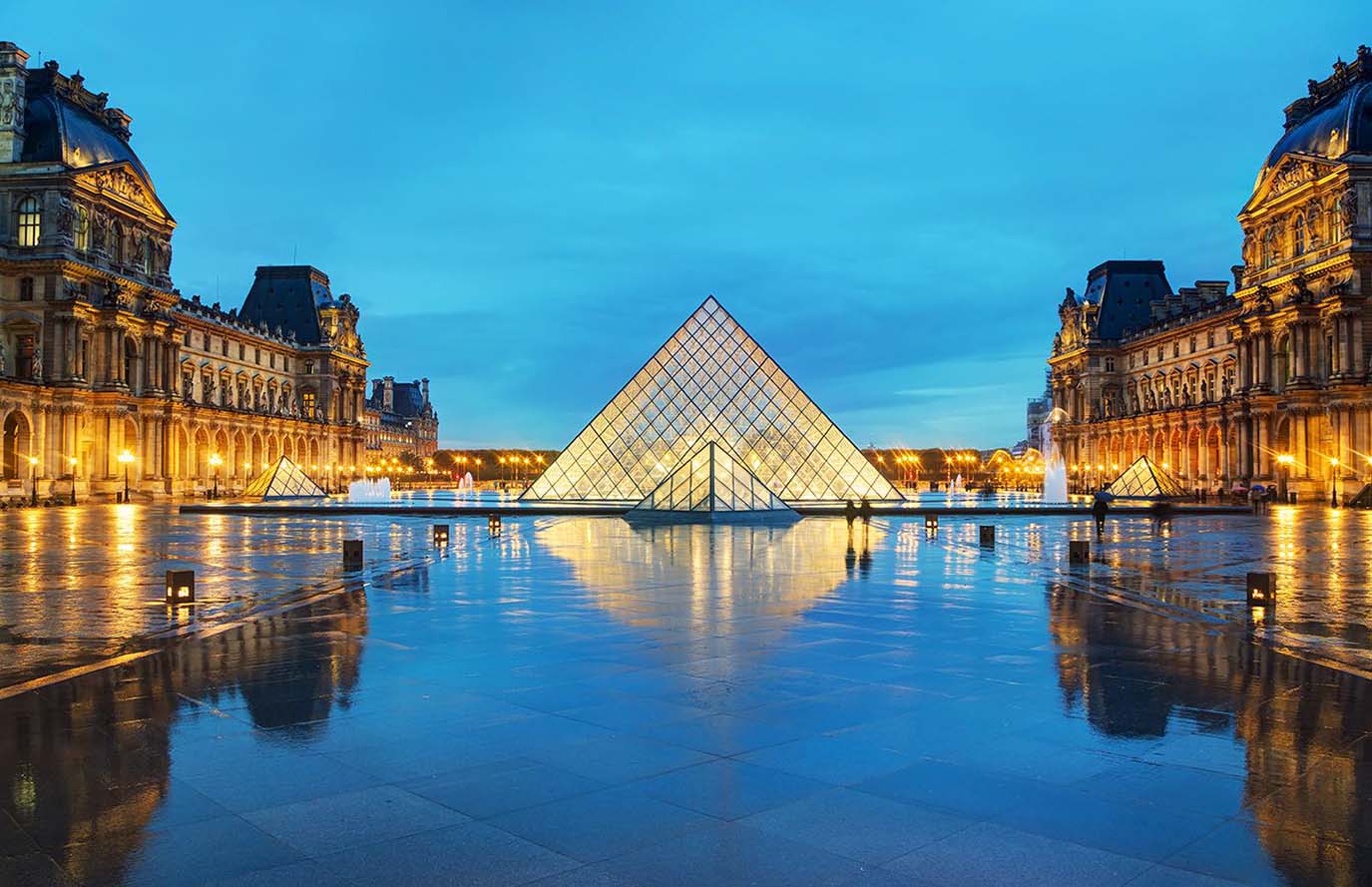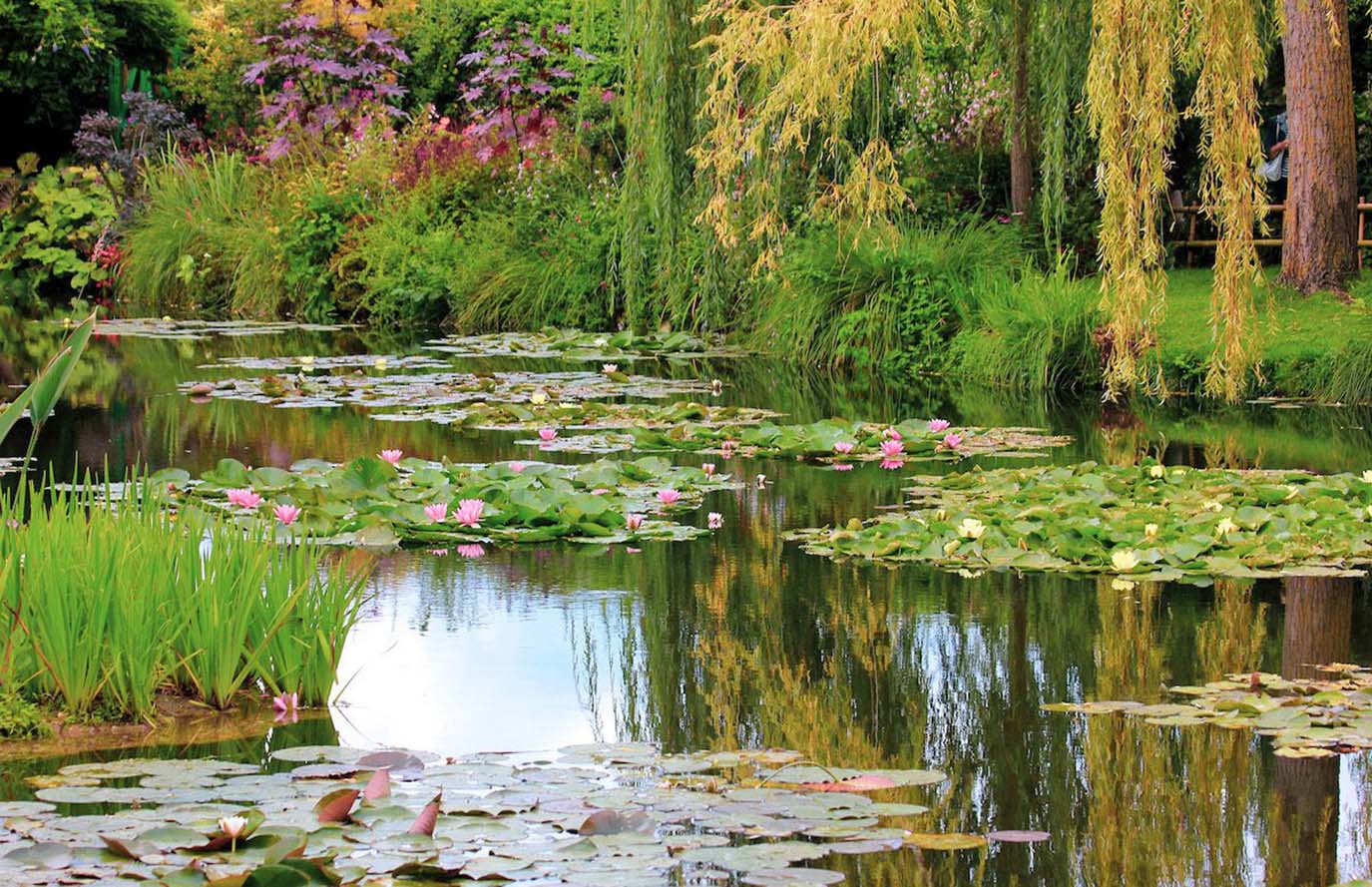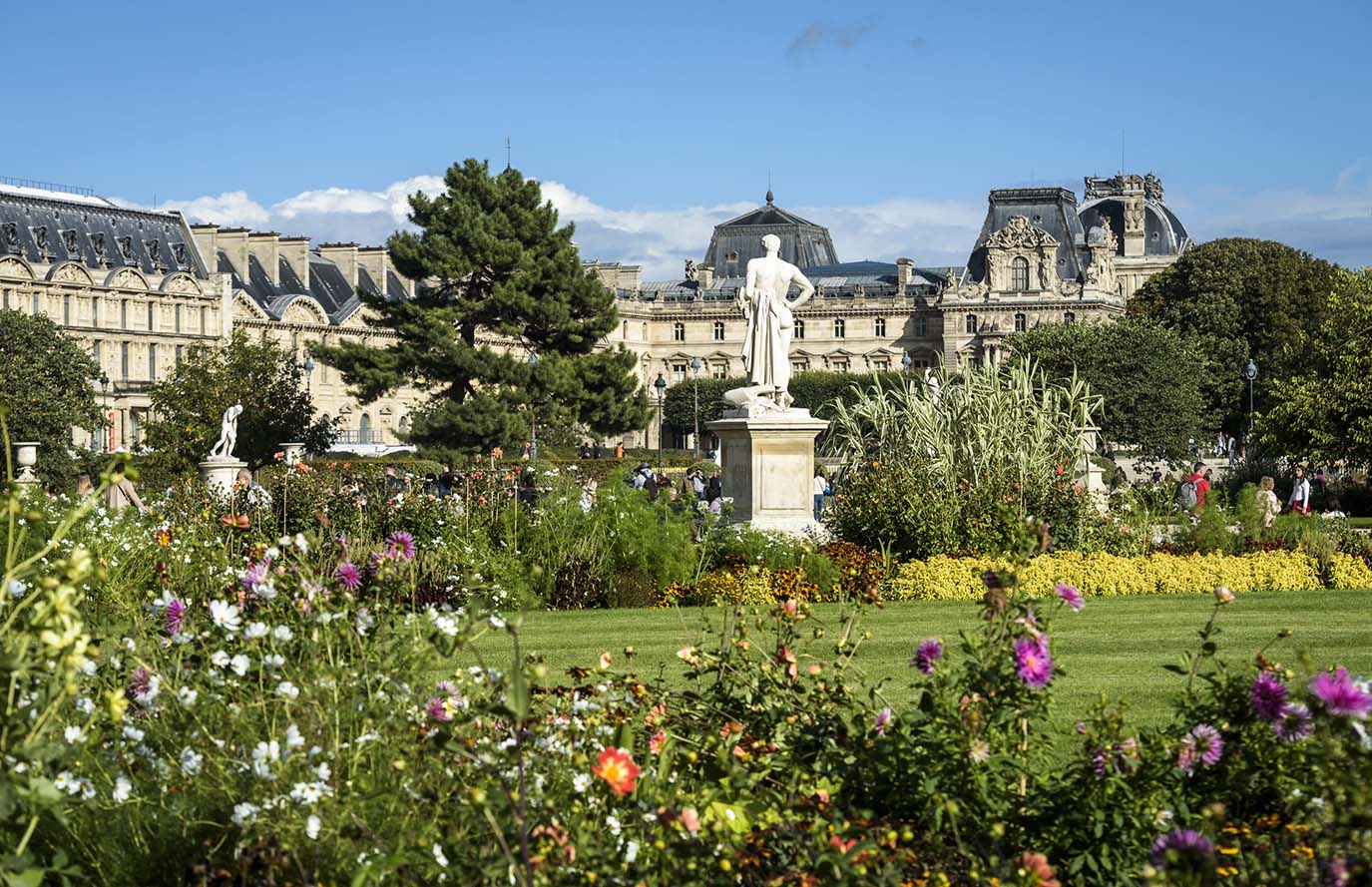Paris, the City of Light, has long been a beacon for artists from around the world. Its storied streets, grand boulevards, and charming neighborhoods have inspired generations of painters, sculptors, writers, and musicians, shaping the cultural landscape of the city and leaving an indelible mark on the history of art. As an art aficionado myself, I embarked on a journey to follow in the footsteps of famous artists who once called Paris home. From the hallowed halls of world-renowned museums to the quaint cafes and bustling streets where creativity thrives, I sought to immerse myself in the rich tapestry of artistic heritage that permeates every corner of this iconic city.
Exploring the Louvre Museum:
Location: Louvre Museum, Rue de Rivoli, 75001 Paris, France
Description: The Louvre Museum is one of the world’s largest and most visited art museums, home to thousands of works of art spanning centuries of human history. From ancient Egyptian artifacts to Renaissance masterpieces and iconic paintings like the Mona Lisa, the Louvre offers an unparalleled journey through the world of art.
Experience: Stepping into the grand halls of the Louvre, I was immediately struck by the sheer magnitude of its collection. Navigating through labyrinthine corridors, I marveled at iconic works such as the Venus de Milo and the Winged Victory of Samothrace. The highlight of my visit was undoubtedly seeing Leonardo da Vinci’s enigmatic Mona Lisa up close—a moment that left me in awe of its timeless beauty.
Services: The Louvre offers guided tours in multiple languages, as well as audio guides for self-guided exploration. There are also onsite cafes and gift shops for visitors to enjoy.
Pros: World-renowned collection, iconic masterpieces, informative guided tours.
Cons: Can be crowded, especially during peak tourist seasons.
How to Get There: The Louvre is centrally located in Paris, easily accessible by metro, bus, or on foot. The nearest metro station is Palais Royal-Musée du Louvre (Lines 1 and 7).
Enhancing Your Louvre Experience:
While the Louvre Museum is undoubtedly a treasure trove of art and history, there are ways to enhance your visit and make the most of your time exploring its vast collections.
Skip-the-Line Tickets:
The Louvre is notorious for its long lines, especially during peak tourist seasons. To avoid wasting time waiting to enter, consider purchasing skip-the-line tickets in advance. These tickets allow you to bypass the queues and gain direct access to the museum, saving you valuable time that can be spent exploring its galleries.
Guided Tours:
While the Louvre offers informative audio guides for self-guided tours, joining a guided tour led by an expert art historian can provide valuable insights and context to the artworks on display. Many tour companies offer specialized tours focusing on specific themes or periods of art history, allowing you to tailor your experience to your interests.
Early Morning or Evening Visits:
To avoid the crowds and enjoy a more tranquil experience, consider visiting the Louvre early in the morning or later in the evening. The museum tends to be quieter during these off-peak hours, allowing you to appreciate the artworks without the hustle and bustle of large crowds.
Focus on Highlights:
With over 35,000 works of art on display, it’s impossible to see everything in a single visit to the Louvre. Instead of trying to cover everything, prioritize the museum’s highlights, such as the Mona Lisa, the Venus de Milo, and the Winged Victory of Samothrace. This will allow you to spend more time appreciating these iconic masterpieces in detail.
Rest and Refresh:
Exploring the Louvre can be a tiring endeavor, so be sure to take breaks and recharge as needed. The museum offers several onsite cafes where you can grab a coffee or snack to refuel between gallery visits. Additionally, take advantage of the museum’s seating areas to rest and relax while admiring the surroundings.
By incorporating these tips into your visit to the Louvre, you can make the most of your time exploring one of the world’s greatest cultural institutions. Whether you’re a seasoned art aficionado or a casual visitor, the Louvre offers a truly unforgettable experience that will leave you inspired and enriched.
Exploring Montmartre:
Location: Montmartre, 75018 Paris, France
Description: Montmartre is a historic neighborhood known for its bohemian charm, cobblestone streets, and stunning views of the city. It was once the stomping ground of famous artists like Pablo Picasso, Vincent van Gogh, and Henri de Toulouse-Lautrec, who were inspired by its picturesque landscapes and vibrant atmosphere.
Experience: Wandering through the winding streets of Montmartre, I felt transported to another era. I visited the iconic Sacré-Cœur Basilica, perched atop the highest point in the city, and admired panoramic views of Paris from its steps. Exploring the Place du Tertre, I encountered street artists and performers showcasing their talents, reminiscent of the artistic spirit that once thrived in this neighborhood.
Services: Montmartre offers guided walking tours focusing on its artistic history, as well as various cafes, boutiques, and art studios for visitors to explore.
Pros: Charming ambiance, artistic heritage, stunning views.
Cons: Can be crowded with tourists, especially on weekends.
How to Get There: Montmartre is easily accessible by metro, with stations such as Anvers (Line 2) and Abbesses (Line 12) providing convenient access to the neighborhood.
Immersing Yourself in Montmartre’s Bohemian Spirit:
While exploring Montmartre, there are several additional experiences you can enjoy to truly immerse yourself in the neighborhood’s rich artistic heritage and bohemian ambiance.
Visit the Musée de Montmartre:
Located in a historic 17th-century building, the Musée de Montmartre offers insights into the neighborhood’s artistic legacy. Explore exhibits showcasing the works of renowned artists who lived and worked in Montmartre, including Toulouse-Lautrec and Renoir. The museum’s tranquil gardens, once frequented by artists like Renoir and Van Gogh, provide a peaceful retreat from the bustling streets outside.
Discover Hidden Gems:
While Montmartre is known for its iconic landmarks like the Sacré-Cœur Basilica and the Moulin Rouge, take time to wander off the beaten path and discover hidden gems tucked away in its winding streets. Explore charming squares like Place Dalida and Place Émile Goudeau, where you’ll find quaint cafes, art galleries, and boutique shops showcasing local artisans’ work.
Attend a Cabaret Show:
No visit to Montmartre would be complete without experiencing the neighborhood’s legendary cabaret scene. Book tickets to a cabaret show at iconic venues like the Moulin Rouge or Le Lapin Agile, where you can enjoy performances ranging from traditional French chanson to contemporary burlesque. Immerse yourself in the lively atmosphere of these historic venues and witness the spirit of Montmartre come to life on stage.
Savor Local Cuisine:
After a day of exploration, indulge in some delicious French cuisine at one of Montmartre’s charming bistros or brasseries. Sample classic dishes like boeuf bourguignon, coq au vin, or escargot, accompanied by a glass of wine or a refreshing kir. Many restaurants in Montmartre offer prix-fixe menus or lunch specials, making it an affordable yet unforgettable dining experience.
By incorporating these additional experiences into your visit to Montmartre, you can fully appreciate the neighborhood’s unique charm and artistic legacy. Whether you’re exploring its historic landmarks, discovering hidden gems, or savoring local cuisine, Montmartre offers a truly unforgettable journey through Paris’s bohemian heart.

Visiting Musée d’Orsay:
Location: Musée d’Orsay, 1 Rue de la Légion d’Honneur, 75007 Paris, France
Description: Housed in a beautifully renovated Beaux-Arts railway station, the Musée d’Orsay is renowned for its collection of Impressionist and Post-Impressionist masterpieces. Visitors can admire works by artists such as Claude Monet, Edgar Degas, Auguste Renoir, and Vincent van Gogh, among others.
Experience: Exploring the Musée d’Orsay was like stepping into a treasure trove of artistic brilliance. I was captivated by the vibrant colors and emotive brushstrokes of the Impressionist paintings, each one a testament to the revolutionary spirit of the movement. Standing before van Gogh’s iconic “Starry Night Over the Rhône,” I felt a profound sense of connection to the artist’s vision and the beauty of the natural world.
Services: The Musée d’Orsay offers guided tours, audio guides, and interactive exhibits to enhance the visitor experience. There are also onsite cafes and a bookstore for guests to enjoy.
Pros: World-class collection, stunning architecture, informative exhibits.
Cons: Can be crowded, especially during peak hours.
How to Get There: The Musée d’Orsay is located on the Left Bank of the Seine River, within walking distance of landmarks such as the Louvre and Notre-Dame Cathedral. It is easily accessible by metro, with stations such as Solferino (Line 12) and Musée d’Orsay (RER C) nearby.
Delving Deeper into the Musée d’Orsay Experience:
While a visit to the Musée d’Orsay promises an enriching journey through the world of Impressionist and Post-Impressionist art, there are several additional activities and insights to enhance your museum experience.
Attend a Special Exhibition:
In addition to its permanent collection, the Musée d’Orsay frequently hosts temporary exhibitions highlighting specific artists, movements, or themes. Check the museum’s website or inquire at the ticket desk to see if any special exhibitions are currently on display during your visit. These exhibitions offer a deeper dive into particular aspects of art history and provide fresh perspectives on the museum’s collection.
Participate in a Workshop or Lecture:
Many museums, including the Musée d’Orsay, offer workshops, lectures, and educational programs designed to engage visitors of all ages and interests. Consider participating in a guided sketching session led by a professional artist, attending a lecture on a particular artist or art movement, or joining a hands-on workshop to learn more about art techniques and materials. These interactive experiences can deepen your understanding of the artworks on display and provide valuable insights into the creative process.
Explore the Museum’s Architecture:
The Musée d’Orsay’s stunning Beaux-Arts architecture is an integral part of its charm and identity. Take some time to admire the building’s grandiose exterior, with its ornate façade and iconic clock tower. Inside, marvel at the spacious galleries, soaring ceilings, and natural light streaming in through the expansive windows. Consider joining a guided tour focusing on the museum’s architecture and history to gain a deeper appreciation for its design and construction.
Visit the Museum’s Bookstore:
Before concluding your visit, don’t forget to stop by the museum’s bookstore to browse a wide selection of art books, exhibition catalogs, and souvenirs. Whether you’re looking to delve deeper into a specific artist’s work, find inspiration for your own creative projects, or simply bring home a memento of your visit, the bookstore offers something for every art enthusiast. Take your time perusing the shelves and selecting a keepsake to commemorate your experience at the Musée d’Orsay.
By incorporating these additional activities into your visit to the Musée d’Orsay, you can enrich your understanding of the museum’s collection, architecture, and cultural significance. Whether you’re attending a special exhibition, participating in a workshop, or simply admiring the building’s beauty, the Musée d’Orsay offers endless opportunities for exploration and discovery.
Exploring Picasso’s Paris:
Location: Various locations in Paris associated with Pablo Picasso
Description: Pablo Picasso, one of the most influential artists of the 20th century, called Paris home for much of his life. Visitors can explore the city through the lens of Picasso’s artistic journey, visiting sites such as the Picasso Museum, his former studio in Montmartre, and the Café de Flore, where he often frequented.
Experience: Following in Picasso’s footsteps was a fascinating journey through the heart of Parisian art and culture. I visited the Picasso Museum, home to the world’s largest collection of the artist’s works, and gained insight into his creative process and evolution as an artist. Exploring the streets of Montmartre, I imagined Picasso sketching scenes of everyday life and soaking in the bohemian atmosphere that inspired his revolutionary art.
Services: Various guided tours and self-guided resources are available for exploring Picasso’s Paris, including maps, audio guides, and museum exhibitions.
Pros: Immersive cultural experience, insight into Picasso’s life and work, opportunity to explore different neighborhoods of Paris.
Cons: Some locations may require admission fees or advance reservations.
How to Get There: Each site associated with Picasso in Paris is easily accessible by public transportation, including metro, bus, and on foot. Detailed maps and directions are available online or at tourist information centers.
Dive Deeper into Picasso’s Parisian World:
Exploring Picasso’s Paris offers a captivating journey into the life and artistic legacy of one of the 20th century’s most celebrated artists. While visiting key sites associated with Picasso provides valuable insights, there are additional ways to immerse yourself in his world and deepen your understanding of his profound influence on Parisian art and culture.
Visit La Butte-aux-Cailles:
While Montmartre is often associated with Picasso’s artistic beginnings in Paris, the lesser-known neighborhood of La Butte-aux-Cailles also played a significant role in his life. Wander through the winding streets of this charming district, known for its vibrant street art and eclectic atmosphere. Stop by Le Bateau-Lavoir, a historic artists’ residence where Picasso lived and worked during his formative years in Paris. Although the original building no longer stands, you can still feel the creative energy that once permeated this bohemian enclave.
Explore Picasso’s Artistic Influences:
Gain a deeper understanding of Picasso’s artistic influences and connections by visiting other museums and galleries in Paris. Explore the Musée National d’Art Moderne at the Centre Pompidou, which houses a diverse collection of modern and contemporary art, including works by Picasso’s contemporaries and fellow avant-garde artists. Consider attending special exhibitions or events focused on Picasso’s relationships with other artists and movements, such as Cubism and Surrealism, to gain insight into his artistic collaborations and innovations.
Experience Picasso’s Parisian Haunts:
Beyond traditional museum spaces, immerse yourself in the ambiance of Picasso’s favorite haunts and hangouts in Paris. Enjoy a leisurely stroll along the Seine River, where Picasso often found inspiration for his paintings of Parisian life and landscapes. Visit the Café de Flore and Café Les Deux Magots in the Saint-Germain-des-Prés neighborhood, where Picasso and other artists of his time would gather to discuss art, politics, and philosophy over coffee and cigarettes. Capture the essence of Picasso’s Paris by indulging in a meal or drink at these iconic establishments, soaking in the same atmosphere that fueled his creative genius.
Attend Cultural Events and Festivals:
Enhance your exploration of Picasso’s Paris by participating in cultural events and festivals celebrating his life and work. Keep an eye out for special exhibitions, film screenings, lectures, and performances dedicated to Picasso and his artistic legacy, which are regularly held at museums, galleries, and cultural institutions throughout the city. These events offer unique opportunities to engage with Picasso’s art in new and dynamic ways, fostering a deeper appreciation for his enduring impact on the Parisian cultural landscape.
By delving deeper into Picasso’s Parisian world, you can gain a richer appreciation for the artist’s life, work, and influence on the city he called home. Whether you’re exploring lesser-known neighborhoods, discovering new artistic connections, or immersing yourself in the vibrant cultural scene of modern-day Paris, Picasso’s legacy continues to inspire and captivate visitors from around the world.

As my journey through Paris came to an end, I couldn’t help but reflect on the profound impact that the city’s artistic legacy had on me. From the timeless masterpieces housed in its world-class museums to the vibrant street art and eclectic galleries that line its cobblestone streets, Paris is a city that pulsates with creativity and inspiration at every turn. As I bid farewell to this enchanting metropolis, I carried with me the memories of my artistic pilgrimage and the enduring legacy of the artists who continue to shape its cultural landscape. Paris will forever hold a special place in my heart as a sanctuary for the soul and a muse for the mind—a city where art truly comes to life.



